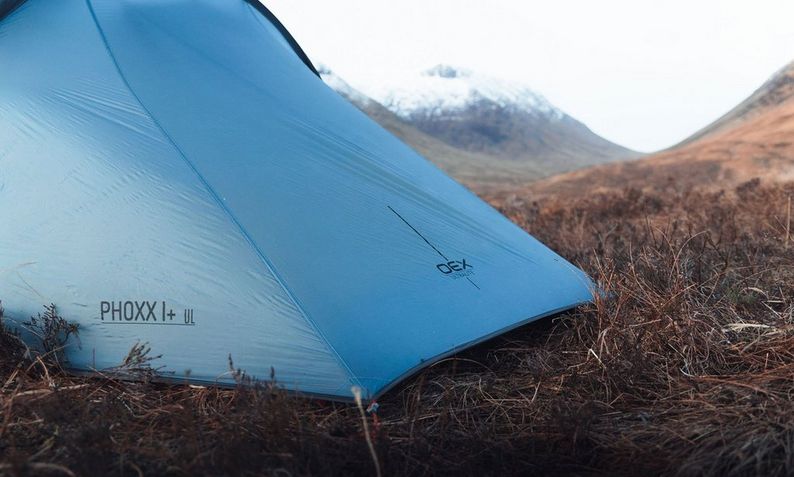Hillwalking in summer conditions in the UK is a very popular activity which is accessible to many people with a pair of walking boots and a sense of adventure. The mountains during the winter months however are a very different proposition and you’ll need a few more skills and a bit more equipment to keep yourself safe. In collaboration with Montane, we've asked Rebecca Coles, a full-time Winter Mountaineer, Climbing Instructor and #montaneathlete her top tips for winter walking.
Can you explain the importance of the layering system and how it works?
A clothing system which involves layering provides protection from the elements whilst being versatile to adjust to different levels of exertion and changes in the weather. Layers trap air which our bodies heat up and allow us to maintain a comfortable body temperature, essential in the cold.
Therefore, instead of having one piece of clothing which wicks sweat away from the skin (important for staying warm and comfortable), and keeps you warm and dry, we have separate items of clothing which do these jobs and can be worn in different combinations to suit conditions and/or exertion.
For the wet, cold environment of the British mountains in winter a typical layering system consists of a base layer, a mid-layer or two, and a waterproof (shell) layer.

What advice would you give to someone planning a winter route?
The best advice is to plan according to the weather and conditions rather than having a fixed plan for a certain day. Weather and conditions change rapidly in the UK so you’ll need an up-to-date weather forecast. Have some alternative low-level options so you can easily change your plan and still have a good day out. Check the avalanche forecast in Scotland, the fell top conditions reporting in the Lake District or the warden’s ground conditions report in Snowdonia.
Make sure you are going out with the right kit for the conditions. Do you have a headtorch in case you are late back (as there are far fewer daylight hours in winter),goggles to see in blowing snow, Crampons and ice axe, several pairs of gloves, accessible food and drink, a small first aid kit and emergency shelter, walking poles can also be useful with heavy bags carried in winter and deep snow.
What safety considerations should winter hillwalkers follow when getting outdoors?
The most important skill in the winter mountains is the ability to navigate well with a map and compass. Navigation is a lot more difficult in winter because features such as paths and streams are no longer visible so navigation skill needs to be higher than in summer. Relying on a mobile phone is not sufficient due to decreased battery life in cold conditions and the difficulty of using them wearing gloves while it’s snowing. With good navigation skills, you can avoid winter hazards such as avalanche terrain and cornices as well as preventing getting lost which can result in exhaustion and impaired decision-making, all circumstances where accidents are more likely to occur.

How important is checking the forecast and having an emergency contact?
Checking a mountain weather forecast such as MWIS and the Met Office Mountain Weather Forecasts is essential. Look at temperatures, wind speeds, precipitation and cloud level. Ascertain whether the forecast says if the weather is improving or deteriorating throughout the day. Make conservative plans on a deteriorating forecast as you don’t want to be at high elevations when the weather turns.
If someone gets into difficulty in the hills, what advice should they know?
People should carry a fully charged mobile phone and know to call 999 and ask for the police before then asking for Mountain Rescue. You will need to let the operator know your location with a description of where you are (mountain name, path, what elevation, for example) and a grid reference as well as what has happened and how many people are involved. If the reception is too poor to make a phone call you can text 999, but you’ll need to register for the service in advance, and a voice call is always better. It may require someone to gain elevation or walk to a road head to get help if there is no mobile phone signal where you are.
Remember that assistance from Mountain Rescue could take hours, especially if conditions don’t allow a helicopter to get to you. You’ll need to keep yourself and any casualty warm whilst waiting. Get out of the wind, get in a shelter and off the cold ground (sitting on a rucksack will suffice), put warm layers on and eat and drink.
How important is knowing when to call it and turn back?
This is really important when doing anything in the mountains, but especially in winter when the margins for error are smaller. Be more conservative if you are on your own. If you are in a group, make sure you take time to check in with everyone and see how they feel about continuing, don’t let the people at the front of the group make all the decisions.

What is the one piece of gear you don’t leave the house without?
An emergency shelter, not a foil blanket or plastic bivi bag, an emergency shelter. It’s like a tent without poles and also known as a group shelter or bothy bag. They come in several sizes depending on group size. I use my two-person and four-person one the most. They enable a group to shelter from the cold and wind. With several people inside they warm up very quickly, and they can be used for breaks to eat your lunch in comfort as much as in emergencies.


